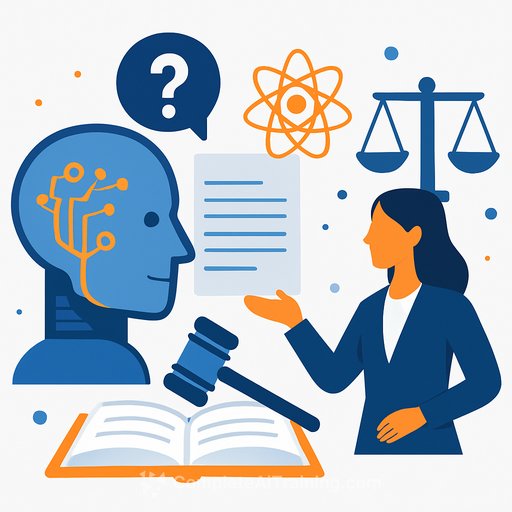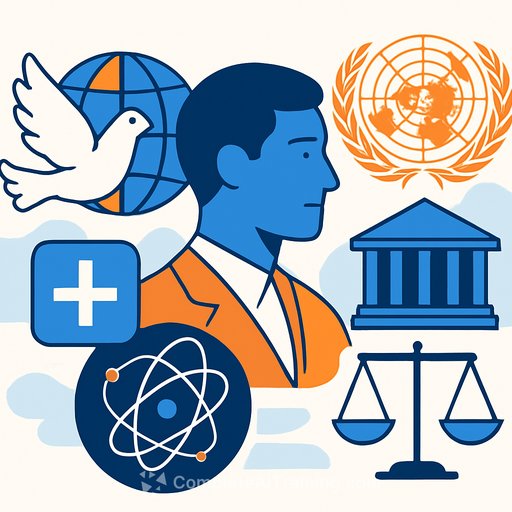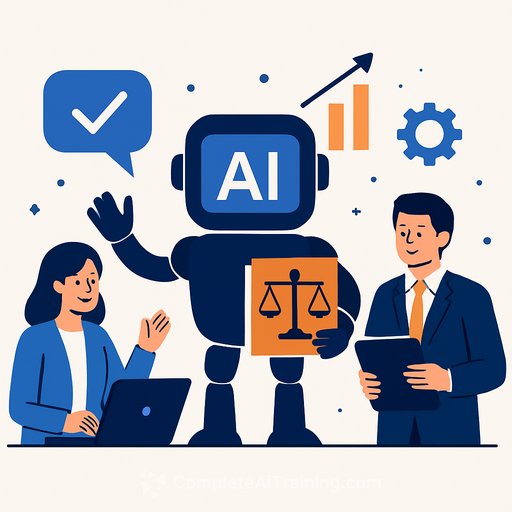AI, the Future of the Legal Profession, and You
AI is reshaping legal research, contracting, advocacy, and access to justice. The pace is fast, the stakes are high, and ethical duties are expanding.
Three alumni at the intersection of law and tech-David Caragliano (Google), Clarissa Cerda (Pindrop Security), and Mary Snapp (Microsoft)-sat down with law students to share what actually works. Their message: get fluent in the tech, double down on judgment, and build processes that stand up when the pressure hits.
Why this matters for your practice
Clients expect speed, precision, and clear risk calls. AI can help, but it also introduces bias, privacy risk, and novel liability questions.
"AI is reshaping everything from legal research and contract analysis to advocacy and access to justice," said Dean Neel U. Sukhatme. Opportunity is real; so are the ethical and professional responsibilities that come with it.
Skills that keep you valuable
- Learn the tech, not just the tools (Snapp). "You don't have credibility as a lawyer unless you understand the technology that you're helping to support." Don't just press buttons-know the basics of how these systems work.
- Protect the fundamentals (Caragliano). Tools will change. Close reading, critical thinking, and a beginner's mindset will not. "Technology is not neutral; it's all about ethics… The hardest question… is not whether something is legal but whether it is right."
- Operate at the intersections (Cerda). Daily essentials: legal reasoning, technological literacy, and ethical judgment. Personal edge: be proactive, stay curious, and commit to continuous learning.
Inside Microsoft's approach to bias and safety
Snapp described a model worth borrowing. Microsoft formed an executive committee in 2016 and launched the Office of Responsible AI (ORA) in 2019 inside the general counsel's organization.
Cross-functional teams of lawyers, researchers, engineers, and anthropologists set standards, flag "sensitive use" cases, and iterate with product groups to mitigate risk. Separate red teams then try to break the product before release. The point: build review into development, not after.
Policy direction: regulating use, not just tech
Caragliano highlighted two paths emerging. The EU AI Act takes a broad, risk-tiered approach, while the US is moving toward targeted rules on specific harms (e.g., election deception).
His take: focus regulation on high-risk uses and align on interoperable standards across industries. What's risky in ads isn't the same as a medical decision tool, and rules should reflect those differences.
The next battles
- Durability. Laws get outdated fast. Future-proofing is hard, but necessary.
- Perverse incentives. Some protections end up shielding fraudsters more than consumers.
- Adversarial testing. Cerda argued for more policy support here-stress-testing is essential to make privacy and safety rules effective in practice.
What you can do now
- Get fluent in the tech. Train yourself and your team on how large models work, their failure modes, and where they fit in legal workflows.
- Codify your AI policy. Define acceptable tools, data use, privilege handling, human review, and escalation paths for sensitive use cases.
- Set up cross-functional reviews. Legal, security, engineering, and product should jointly assess AI deployments that touch customers or rights.
- Adopt red teaming. Attack your own workflows. Try to induce bias, leakage, hallucinations, and misuse. Document and fix.
- Audit high-impact areas. Start with research, contract review, discovery, marketing claims, and anything client-facing.
- Track the rules. Map how the EU AI Act, US state laws, and industry standards affect your clients and internal tools.
A note to students and junior lawyers
Learn how you learn best and stay comfortable being a beginner. Tools will change; your judgment is the product. If you keep your ethics sharp and your literacy high, you'll be the person clients trust when it counts.
Keep going
If you're building your skill stack, these curated resources can help your team stay current and practical:
Banner photo: Clarissa Cerda, '92 (left), David Caragliano, '09 (center), and Mary Snapp, '84 (right), answer questions from an audience of Michigan Law students about AI in the legal profession.
Your membership also unlocks:






